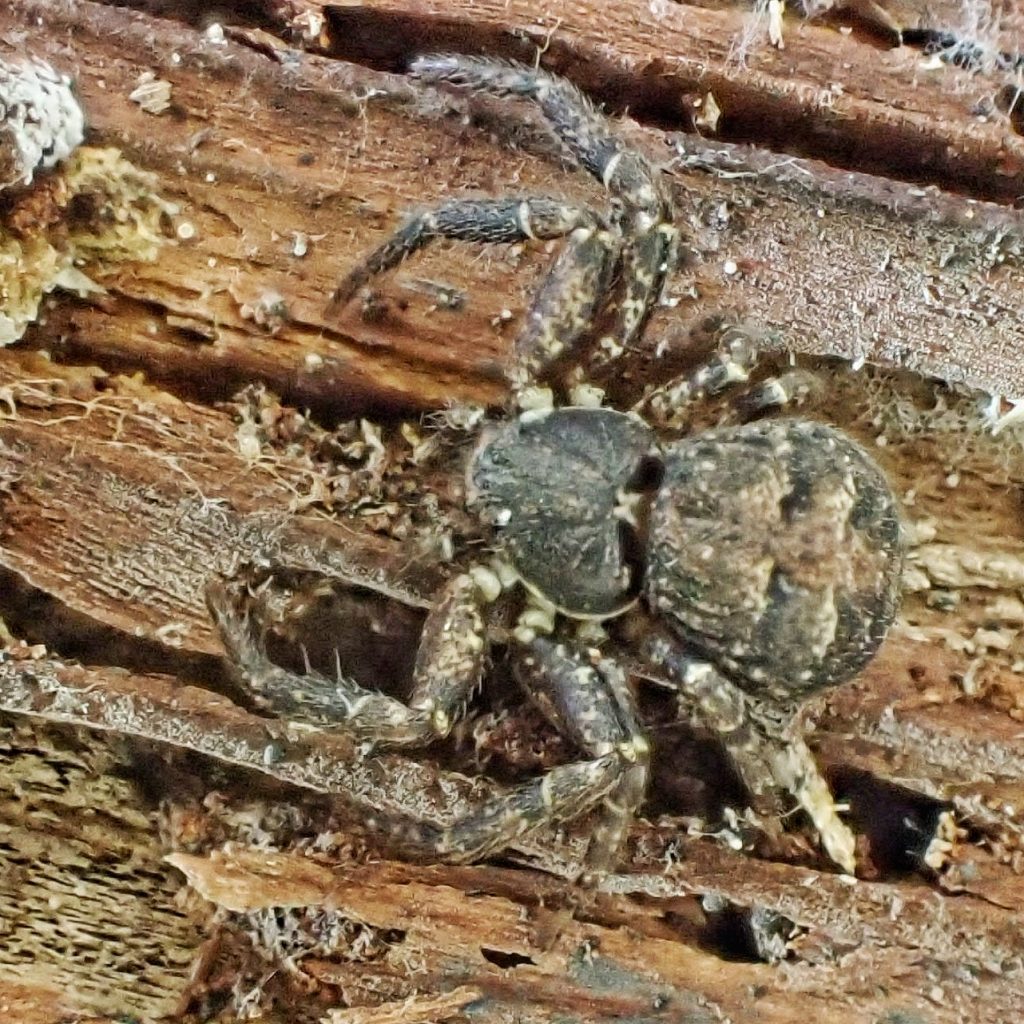
It’s always a pleasure to go out looking for cool stuff with my grandson Lee, because not only is he good company but the kid has eagle eyes. And by that I don’t just mean that he has good vision. I mean he has a real knack for spotting shapes that are slightly anomalous to their background. We were primarily looking under logs for salamanders, but I also tend to peel back a bit of loose bark when I find it, and was doing so when Lee asked ‘What kind of spider is that?’ It took me some seconds to even find the well camouflaged crab spider that was just inches from my hand, while Lee had spotted it from a few feet away. It had that crab spider look about it, but it also had a very low profile and flattened carapace that I didn’t recognize at all, so after a few photos and a few moments to appreciate how well it blended into its background, and how well designed it seemed to be for fitting beneath the bark, I collected it before it could slip away.
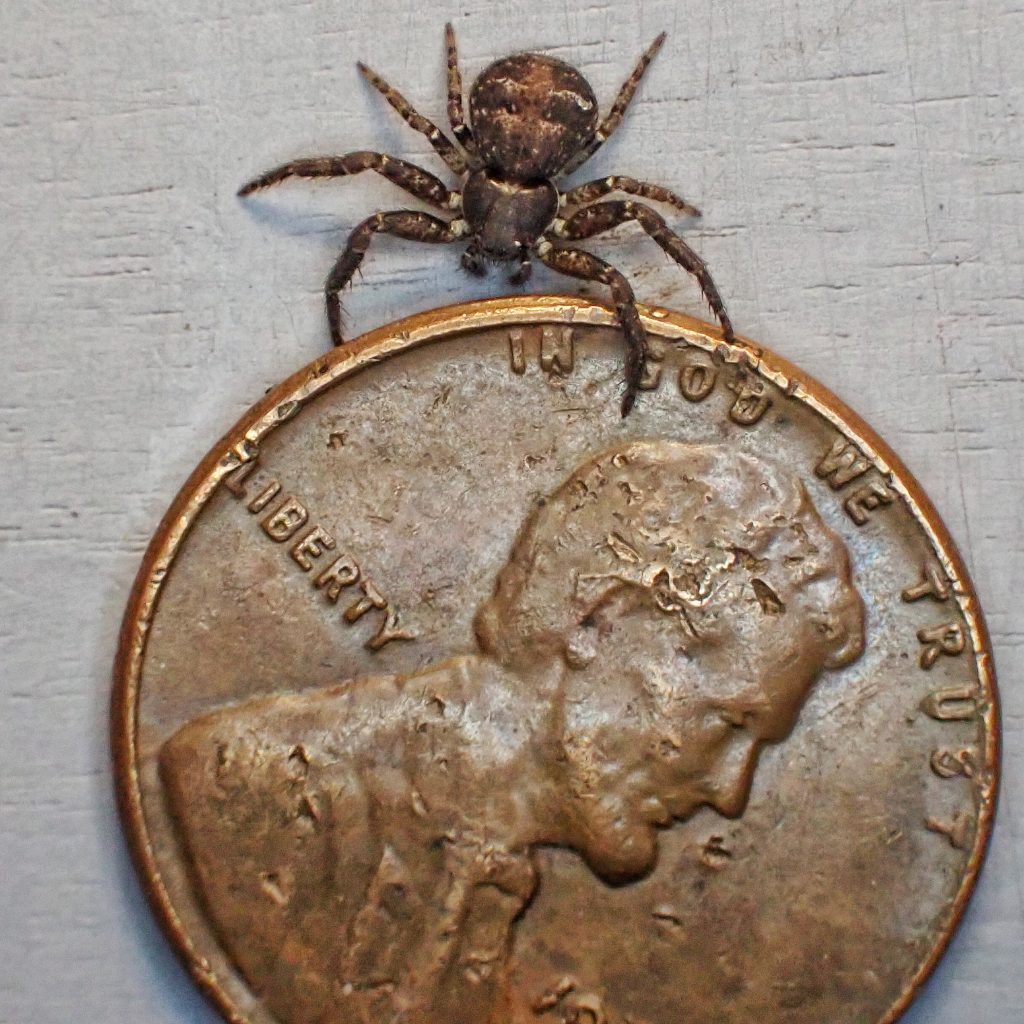
Back at home I perused some spider books while the spider was chilling in the fridge. Based on illustrations and description I was pretty sure it was in what the book called the genus Coriarachne, but I realized some microscopy would be required to see whether the carapace hairs were thick and blunt, or thin and pointed. I really enjoyed watching this spider move around (and off) my little stage as I photographed it, but it was obvious that he wasn’t going to be cooperative enough to examine under the scope while still alive. So I reluctantly euthanized him in the freezer, and thus got the microscopic views that confirmed its identity as the species utahensis.
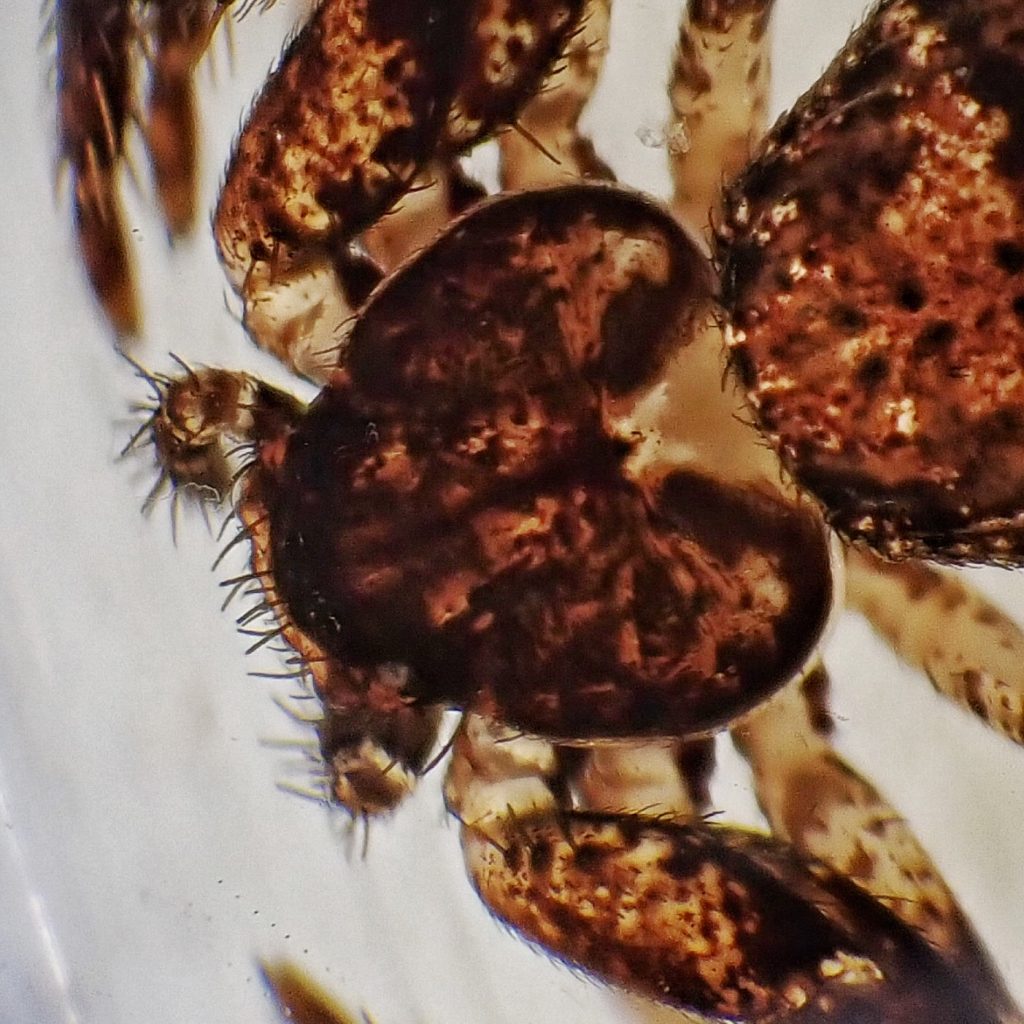
There is apparently not full agreement on the proper genus name for this bark crab spider. In “The Field Guide to the Spiders of California and the Pacific Coast” (RJ Adams; 2014) Adams states that “…numerous reviewers have found that C. utahensis and other North American Coriarachne should be considered members of the same genus.” But according to Rainer Breitling’s study (2019) of molecular data, “Coriarachne and Bassaniana appear as independent clades rather than a joined monophyletic Coriarachne s. lat.” https://www.biotaxa.org/em/article/download/em.2019.20.16/42618
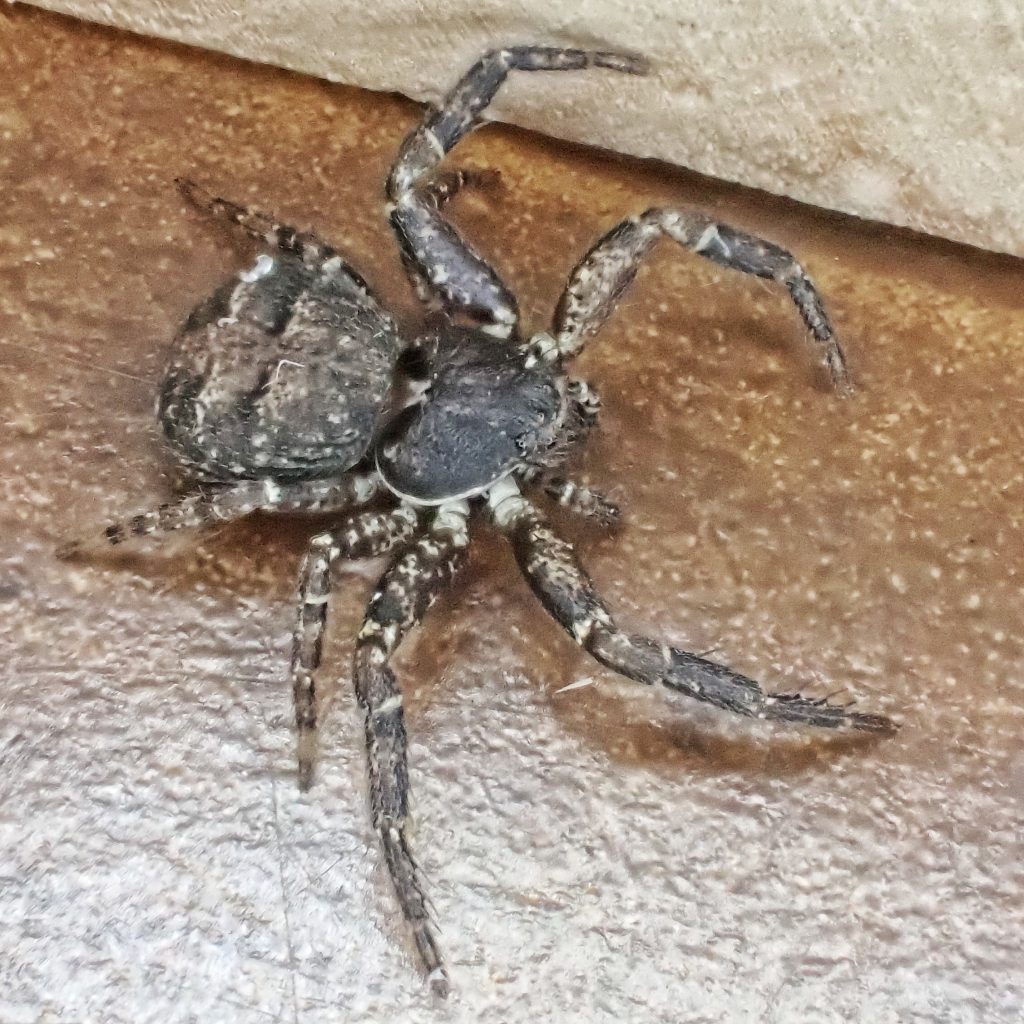
But there is agreement that, along with Xysticus and Ozyptila, Coriarachne and Bassaniana belong in the clade Coriarachnini within the family Thomisidae. I’ve chosen to label it under the genus Bassaniana, because that name seems to have the most current usage, but for the purposes of these profiles I wish I was using the generic name Coriarachne, since I can verify that that translates roughly to ‘bark spider’, whereas I can find no information at all on what Bassaniana is supposed to signify.
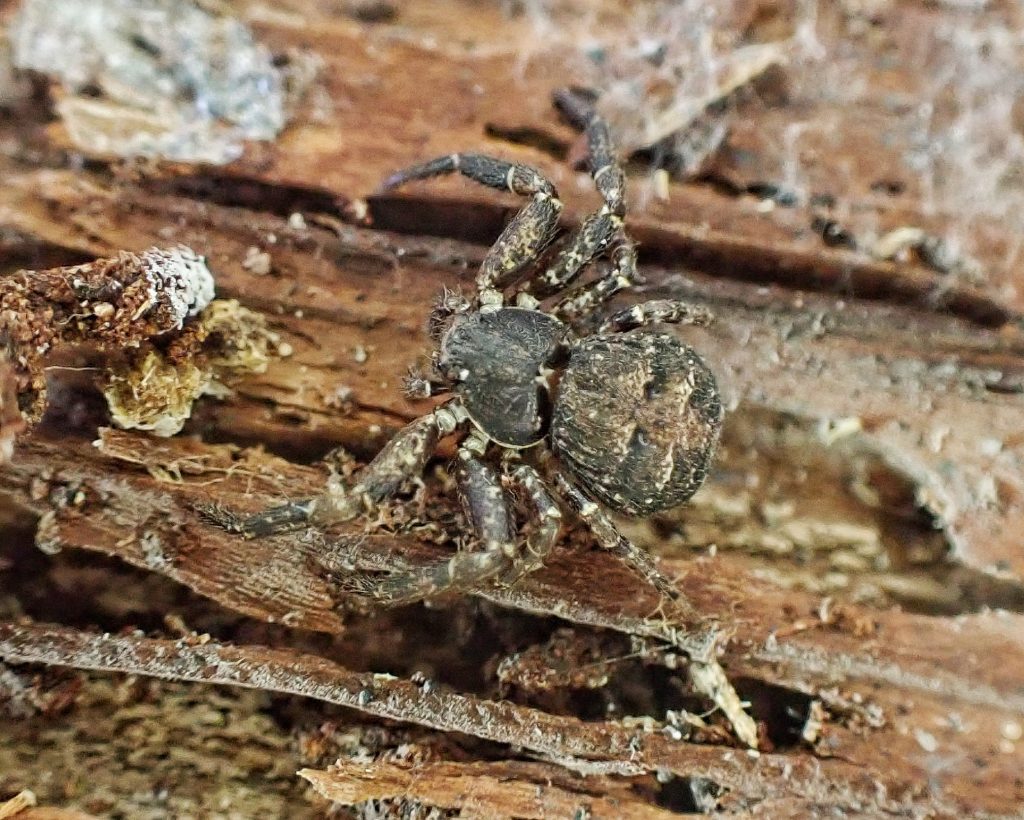
Description– Males are 4-6.2mm body length; females are 4.5-9mm body length; crab shaped, mottled brown spider, with a slightly darker and more solid colored carapace that is very flat, relatively thick, blunt setae on the carapace, and the upper row of eyes is slightly recurved.
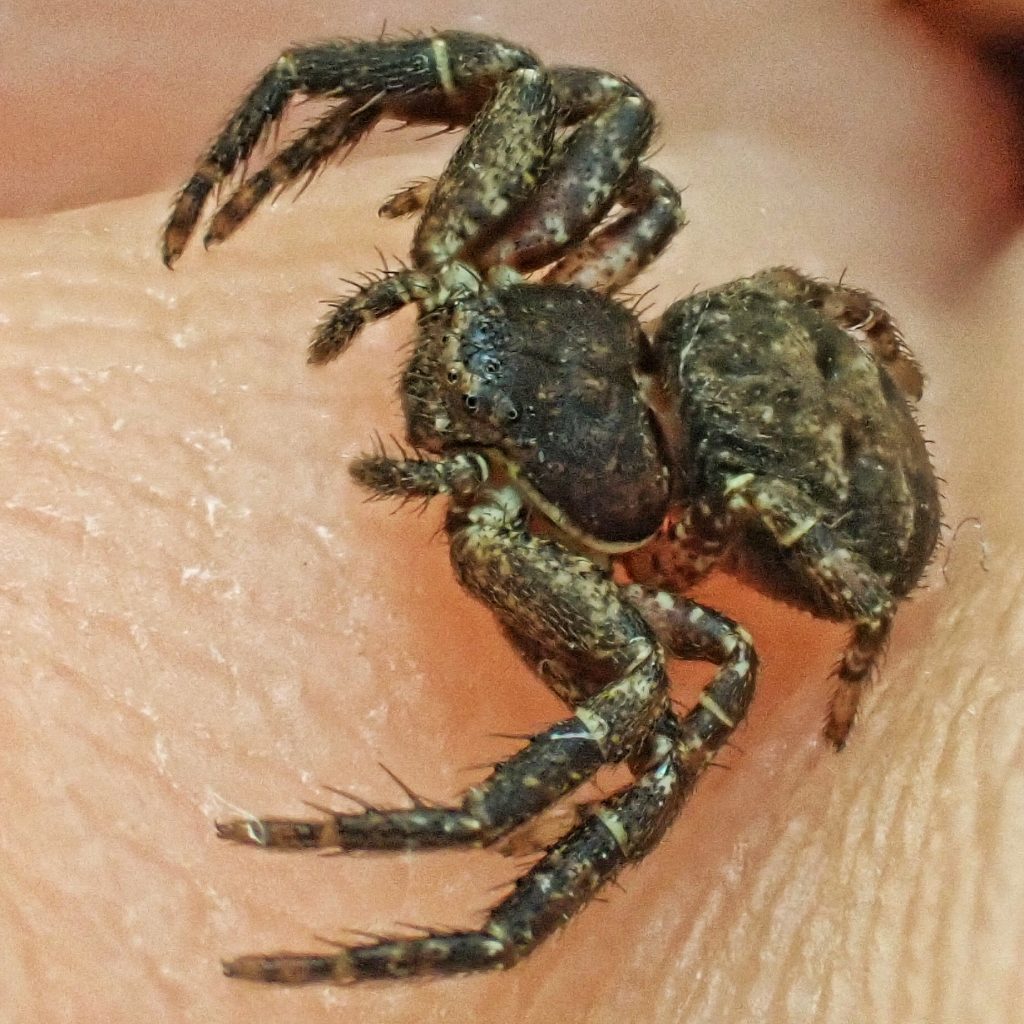
Similar species– From Rod Crawford, via BugGuide : “The key feature [separating Coriarachne brunneipes or Bassaniana utahensis] is whether the large setae on the carapace have pointed ends (Coriarachne) or blunt ends (Bassaniana)” Genus Coriarachne – BugGuide.Net
“Ozyptila and Xysticus are both distinguished from either Coriarachne or Bassaniana by the lateral profile of the carapace: as Lynette mentioned, in both Coriarachne and Bassaniana the carapace is roughly flat all the way from front to back. The side profile of the carapace for Ozyptila and Xysticus, on the other hand, will be higher near the front and will drop down near the back at around coxa three. Coriarachne and Bassaniana maintain roughly the same level height from front to back.” Genus Coriarachne – BugGuide.Net
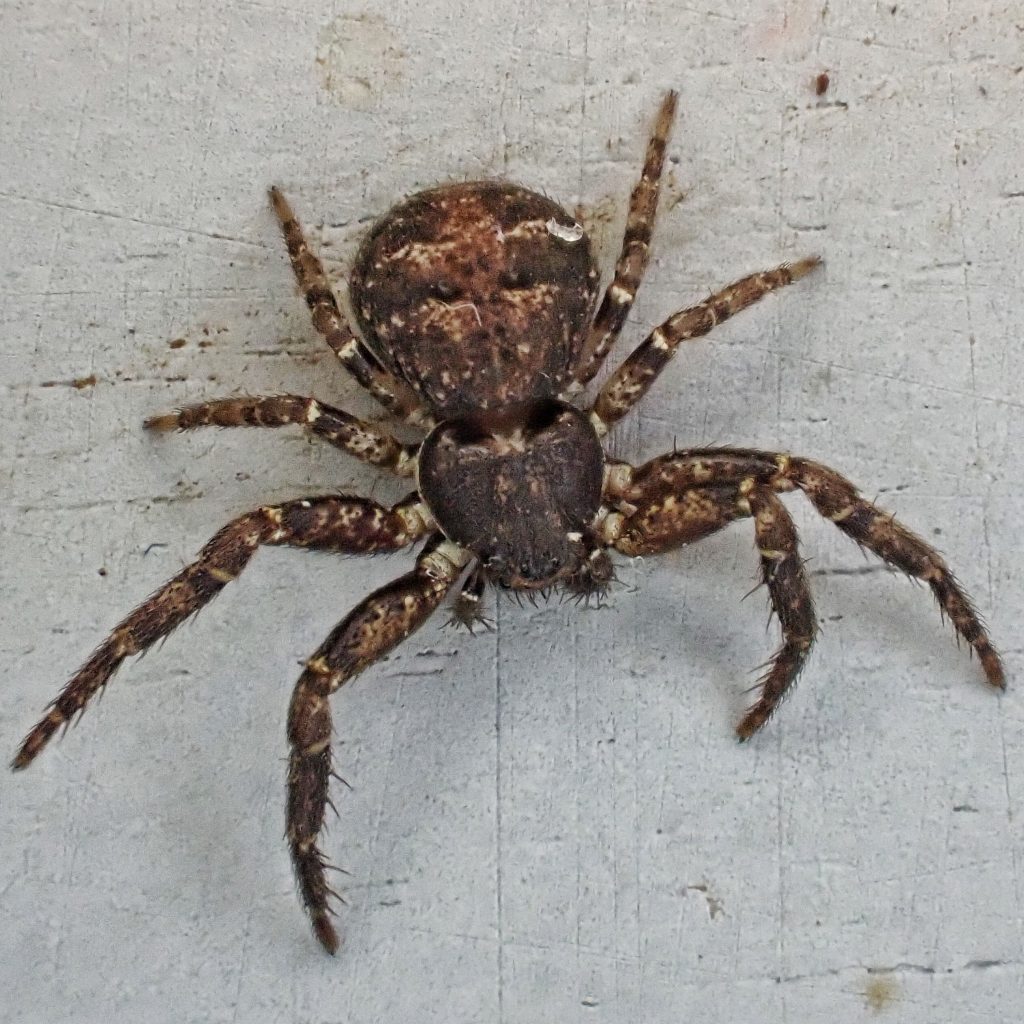
Habitat– “They are found almost exclusively on tree bark, wooden fence posts and the like where their color camouflages them . Often these spiders will congregate under loose bark, leaf litter, or similar situations to spend the winter either in the adult or penultimate stage.” https://www.americanarachnology.org/journal-joa/joa-all-volumes/detail/article/download/JoA_v2_p183.pdf/?no_cache=1
Seem to be found equally on conifers and deciduous trees.
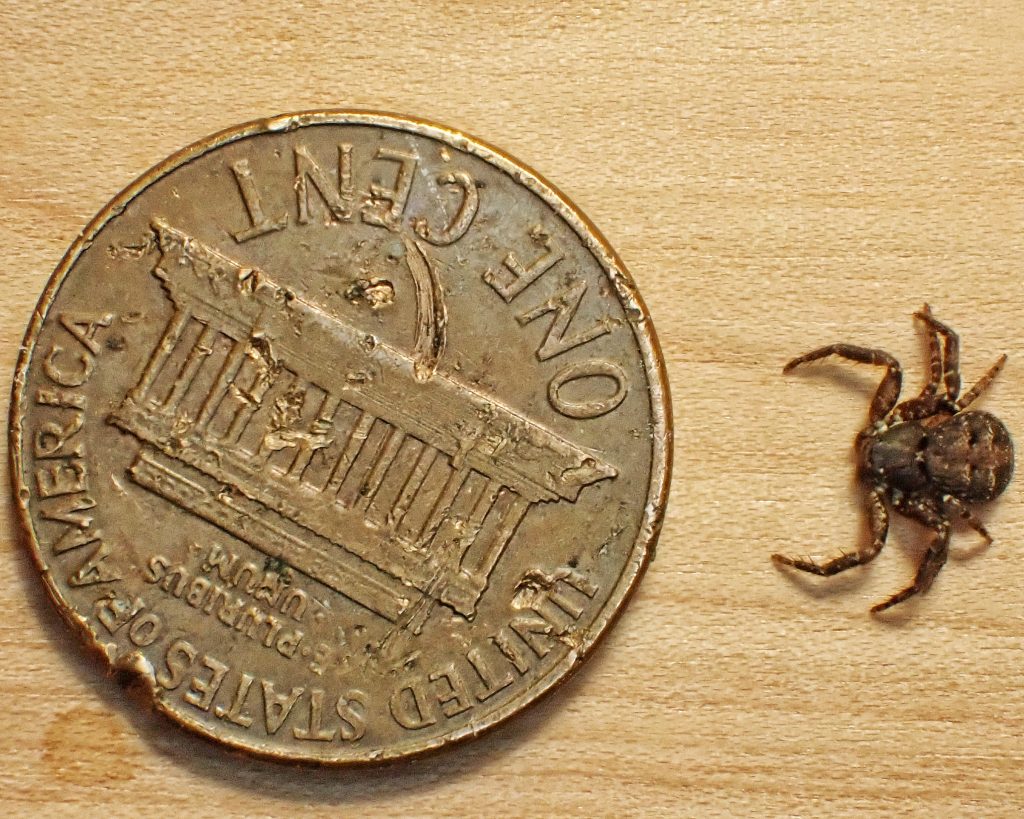
Range– “Trans-Canadian and northern United States, along Gulf coast states from Florida into Mexico, also from central Alaska south along mountain ranges into Mexico.” Genus Bassaniana – Bark Crab Spiders – BugGuide.Net
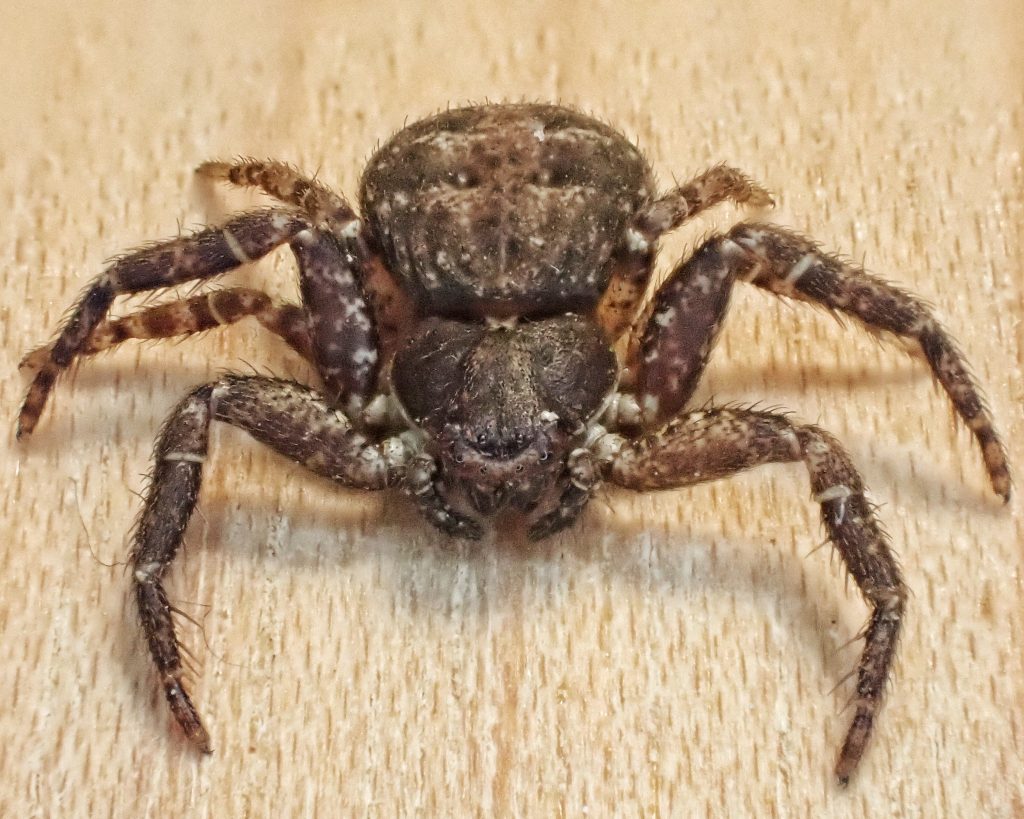
Eats– These spiders are ambush predators rather than pursuit hunters or web snarers; presumably eats springtails, mites, and other tiny invertebrates that live on and beneath the bark of trees, but I can find no definitive answer as to the prey of this species.
Eaten by– Presumably any small carnivore that can find and subdue them, but I can find no references to predators of this species.
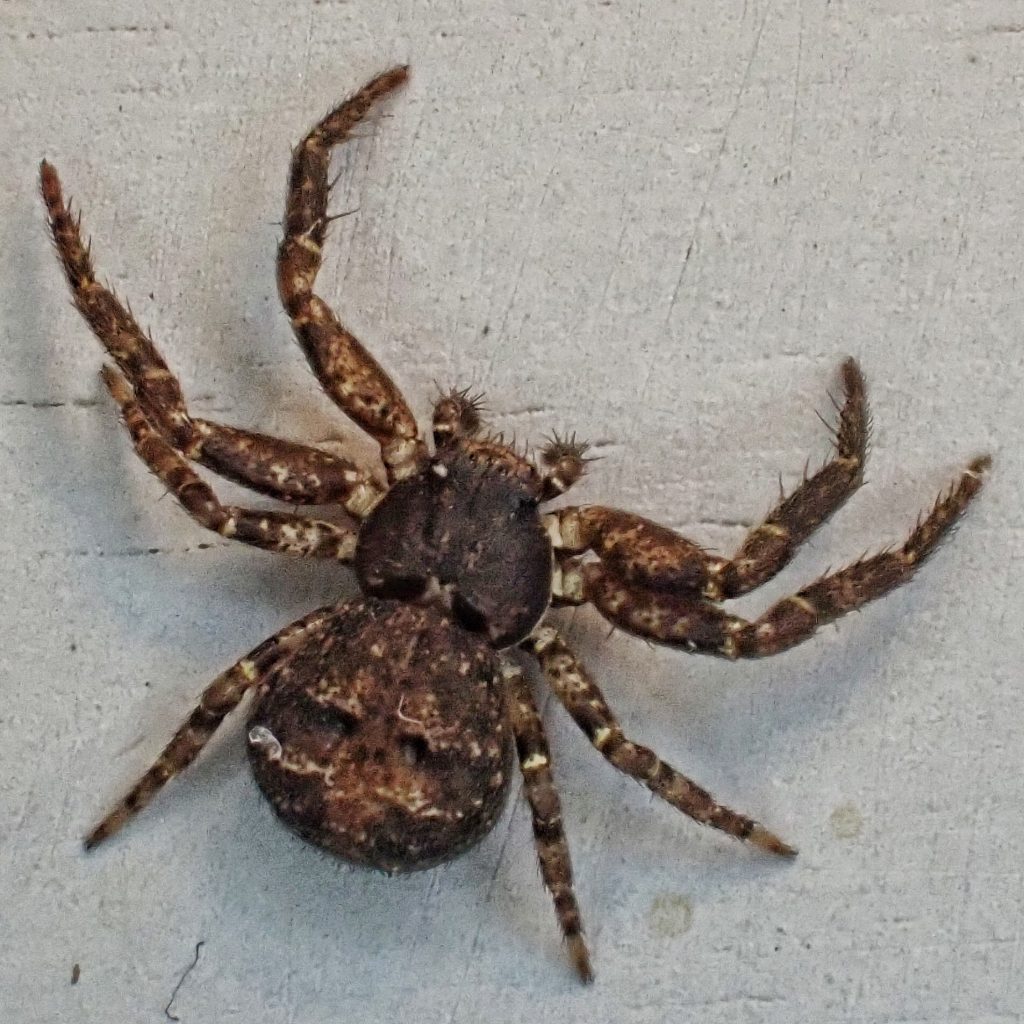
Adults active– Year around, but relatively dormant during the cold months.
Life cycle– I can find no information on the breeding or egg laying habits of this species.
Etymology of names– I can find no information on the etymology of the generic name Bassaniana,nor anything saying what it references. The specific epithet utahensis denotes the locality of the type specimen.
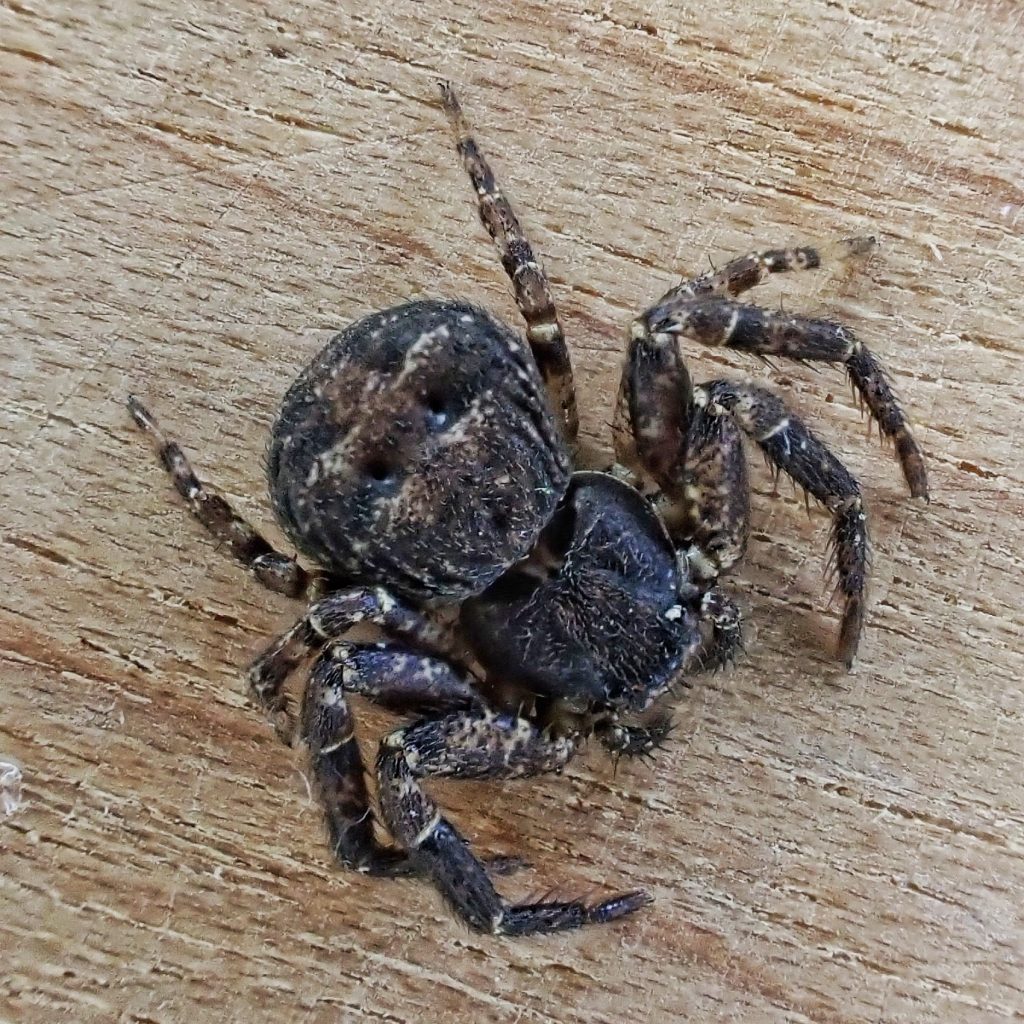
Species Bassaniana utahensis – BugGuide.Net
Genus Coriarachne – BugGuide.Net
Bassaniana utahensis | Table Grape Spider ID
Genus Bassaniana – Bark Crab Spiders – BugGuide.Net
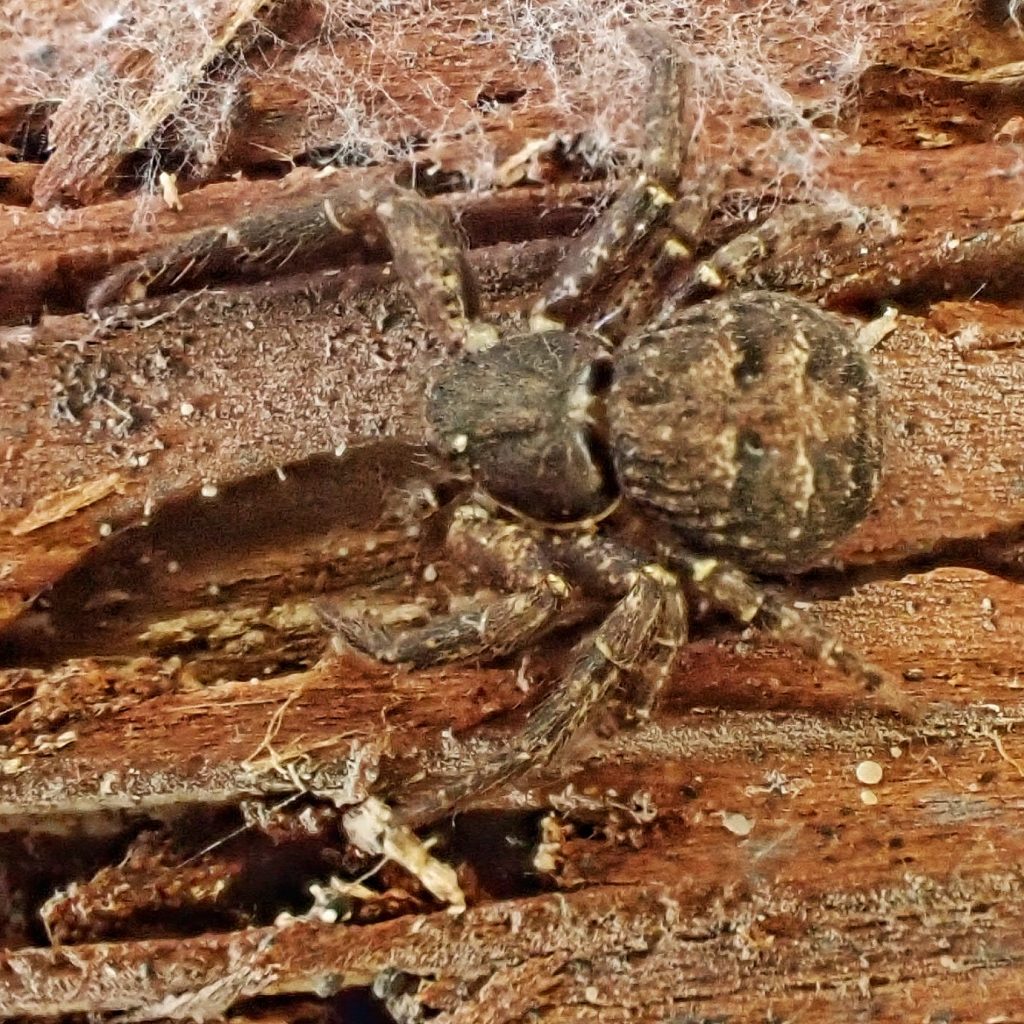
Interesting post. Lots of unknowns. It’s a good reminder that there is plenty of research waiting to be done.
There is enough that is unknown about the flora and fauna of this world that you could keep hundreds of thousands of people busy for a thousand years and barely scratch the surface. Unfortunately, no one wants to pay people to do that.
See if you can find “Evolution Under Bark,” (1978) by W. D. Hamilton. P. 154-175.
I think it’s in a publication by other authors. L. A. Mound and N. Waloff (eds). Diversity of Insect Faunas. Oxford, Blackwell scientific publications.
It is a book, and I’ll try to see if I can get it through the library. Thanks
Are they poisonous? Can they harm a pet or child? I only as as I think I found some near my house.
They are not medically significant for humans or pets. Very few spiders are. They are not at all aggressive, and I really don’t think they are big enough to get their chelicerae through anyone’s skin. Perfectly harmless to have around your house, Nan.